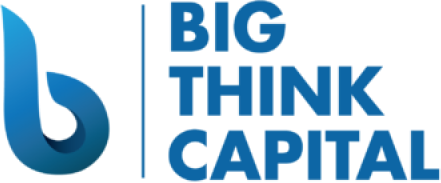Navigating the Impacts of Recent Fed Interest Rate Adjustments on Small Businesses
Estimated reading time: 7 minutes
- Stay informed about economic trends and interest rates.
- Evaluate all financing options to find the best fit for your business.
- Prioritize proactive financial management to maintain cash flow.
- Streamline inventory and accounts receivable for efficient capital use.
- Build strong relationships with banking institutions for better terms.
Table of Contents
- Understanding the Fed Interest Rate Changes and Small Businesses
- How Changes in Interest Rate Impact Your Working Capital
- Strategies to Optimize Your Working Capital Amid Interest Rate Adjustments
- Building Resilient Bank Relationships for Your Small Business in Times of Financial Change
- Case Studies: Small Businesses Thriving Amid Rate Changes
- Practical Takeaways for Business Owners Exploring Financing
- Conclusion
Understanding the Fed Interest Rate Changes and Small Businesses
The Federal Reserve adjusts interest rates primarily to manage economic growth and inflation. Increased rates often aim to cool off an overheating economy, while decreases are used to stimulate lending and spending. As of early 2025, the Fed has implemented several rate hikes in response to persistent inflation pressures, ultimately affecting borrowing costs for small businesses and consumers alike.
According to the Federal Reserve Economic Data (FRED), small business loan rates are closely tied to the Fed’s target rate. Consequently, as rates rise, the cost of borrowing increases, making it essential for business owners to grasp how these adjustments directly impact their financing options.
The implications can be significant:
- Expenses Increase: Small businesses relying on loans or credit will face higher repayment costs, which can strain cash flow.
- Investment Decisions: Elevated borrowing costs may hinder plans for expansion or capital investments, as projects become less financially viable.
- Cash Reserve Strategy: Increased rates may compel owners to reevaluate their cash reserves and working capital strategies to maintain liquidity.
Understanding these elements positions business owners to better navigate financial decisions without jeopardizing operations.
How Changes in Interest Rate Impact Your Working Capital
Working capital—defined as current assets minus current liabilities—serves as a crucial measure of a business’s short-term financial health. Interest rate hikes can exert a profound influence over working capital. Here are some key impacts to consider:
- Increased Cost of Debt: Businesses relying on lines of credit or loans will see a rise in interest payments. This can lead to cash flow pressures if repayments consume a larger portion of revenue.
- Opportunities for Alternative Financing: Higher rates may cause some traditional banks to tighten lending criteria. As a result, small businesses may explore alternative funding options, such as merchant cash advances or equipment financing, which might have different risk profiles but can still provide necessary capital.
- Cash Flow Management: With elevated costs, liquidity becomes even more crucial. Business owners need to analyze their cash flow cycles carefully and identify potential bottlenecks, choosing to strategically delay certain expenses to safeguard cash reserves.
Strategies to Optimize Your Working Capital Amid Interest Rate Adjustments
Optimizing working capital is integral to steering through periods of rising rates. Here are effective strategies to consider:
- Inventory Management: Conduct regular evaluations of inventory turnover rates. Reducing excess inventory can free up significant cash and improve working capital.
- Accounts Receivable Optimization: Strengthen collection efforts by sending timely invoices and following up on overdue accounts. Consider offering discounts for early payments to incentivize prompt transactions.
- Diversify Funding Sources: Engage with various funding platforms to explore options outside traditional bank loans. Big Think Capital offers several lending solutions, including working capital advances and SBA loans, allowing you to select the most favorable terms for your needs.
- Cut Non-Essential Expenses: Conduct a thorough analysis of all expenditures to identify discretionary spending that can be curtailed without risking the quality of products or services offered.
- Consider Fixed-Rate Financing: When feasible, opt for fixed-rate loans to hedge against future rate increases. This allows for predictable repayment amounts which can aid in long-term financial planning.
Building Resilient Bank Relationships for Your Small Business in Times of Financial Change
Creating and maintaining strong relationships with banks is critical, especially during fluctuating interest rates. Here are some tips for fostering these connections:
- Open Communication: Regularly update your bank about changes in your business and financial situation. Transparency helps build trust and may result in more favorable terms during funding negotiations.
- Demonstrate Financial Health: Provide your bank with detailed financial projections and budgets to illustrate your planning capabilities and growth potential. Highlighting consistent revenue can instill confidence in lenders.
- Leverage Technology: Utilize financial management software that not only tracks expenses but also enables sharing of real-time data with lending partners. This can shorten the response time for funding requests.
- Network at Financial Events: Attend industry seminars, workshops, or local business events to meet banking representatives. Build rapport that might come in handy when you need financing.
Case Studies: Small Businesses Thriving Amid Rate Changes
Despite the challenges posed by increased interest rates, several small businesses have shown resilience and even found ways to thrive. Here are a few illustrative examples:
- Endless Curiosities: This independent bookstore faced higher costs after the Fed rate hikes but successfully optimized their working capital by tightening inventory management and improving their accounts receivable processes. By implementing an aggressive collection strategy for outstanding invoices, they maintained cash flow even as their operating costs increased.
- Green Thumb Landscaping: After feeling the adverse effects of rising borrowing costs for equipment, Green Thumb Landscaping pivoted to seeking equipment financing through Big Think Capital. This allowed them to upgrade their tools while maintaining a fixed repayment plan, enabling them to continue expanding their client base without substantial upfront costs.
- Tech Innovations LLC: A tech startup benefitted from a favorable line of credit before rates increased. By engaging in proactive financial planning, they were able to secure additional funding while minimizing potential impacts from rising costs. Consequently, they launched a new product line ahead of competitors, illustrating how strategic foresight can lead to success.
Practical Takeaways for Business Owners Exploring Financing
As small business owners navigate the complexities of financing amid changing interest rates, here are three key takeaways:
- Stay Informed: Regularly keep up with economic news and interest rate trends. Awareness allows you to anticipate changes and adapt funding strategies accordingly.
- Evaluate All Options: Don’t shy away from exploring various financing solutions. Big Think Capital offers a range of products tailored to different business needs, facilitating access to the capital necessary for growth.
- Proactive Financial Management: Prioritize financial planning by actively managing working capital, evaluating expenses, and ensuring that cash flow remains robust even in these fluctuating times.
Conclusion
In summary, staying informed about the Federal Reserve’s interest rate decisions and their impacts on your business is essential. As small business owners, you’re not just part of the economic landscape; you can drive its success. By implementing strategic working capital management practices and fostering strong relationships with financial institutions, you can position your business to thrive even amid financial change.
If you’re seeking to optimize your financing approach in 2025 or need tailored guidance on accessing business funding, visit bigthinkcapital.com to explore how we can support your business needs or speak with one of our funding experts today. Don’t let the complexities of the financial market hold you back—secure your business’s future with confidence.
FAQ
1. How do interest rate changes affect small business loans?
Interest rate changes directly affect the cost of borrowing for small businesses. Higher rates increase repayment costs, while lower rates can facilitate better terms and lower expenses.
2. What strategies can help maintain cash flow during rate hikes?
Consider optimizing accounts receivable, managing inventory effectively, and exploring diverse funding options to maintain cash flow during rate hikes.
3. Why are bank relationships important during fluctuating rates?
Strong bank relationships can provide small businesses with better access to financing and more favorable loan terms, which are crucial during changing interest rate environments.






